Gingerbread Fantasies
by Bob Brooke
 A
sweet treat from Colonial times in America, gingerbread has always
been special at holiday time, whether it has been fashioned into
simple, fanciful shapes to decorate a pine tree, as sturdy men for
eating, or as a flavorful cakes for dessert.. A
sweet treat from Colonial times in America, gingerbread has always
been special at holiday time, whether it has been fashioned into
simple, fanciful shapes to decorate a pine tree, as sturdy men for
eating, or as a flavorful cakes for dessert..
For many Americans, the word gingerbread conjures up homey images of
warm kitchens, childhood treats, and simple holiday pleasures. In
1796 Amelia Simmons included a recipe for it in the first cookbook
ever published in America.
As a fragrant cake, it emerges from the oven soft, moist, and sweet,
to be eaten unadorned or with a dollop of whipped cream or a tangy
sauce. If intended to be used to trim a holiday tree or constructing
a gingerbread house, it can be transformed into a malleable dough;
rolled, pressed into fanciful molds, and baked.
The Origins of Gingerbread
Crusaders brought the ginger spice back from the East. The
confection known as gingerbread first appeared in England as
gingerbruti, a medieval medicinal paste compounded of ginger,
pepper, parsnips, and honey. They often added wine, ale or other
kinds of liquor but eventually substituted molasses and flour for
the honey and breadcrumbs, and by the end of the 14th century the
concoction became known as gyngerbrede.
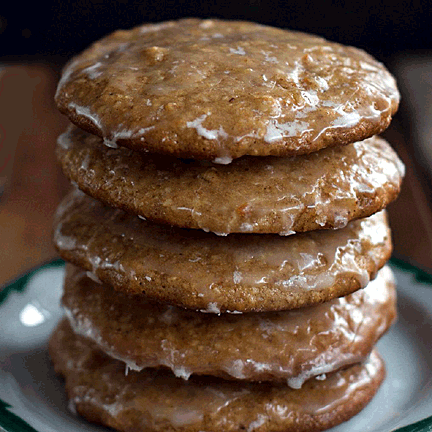 But
it wasn't until 1485 in Nuremburg, that the author of the first
printed cookbook referred to Lebkuchen, spiced cakes decorated with
whole clove and colored icing. Cooks flavored these delectable cakes
with a variety of spices ginger, cinnamon, cloves, cardamom, anise
and white pepper which came from Eastern Europe and Mediterranean
trade routes. They replaced one other expensive and rare ingredient,
sugar, with honey, gathered from beekeepers who settled in the woods
around the city. The Lebkuchen bakers considered themselves artisans
and carved wooden molds to press patterns into the gingerbread. They
also used gold dust to produce an edible paint. But
it wasn't until 1485 in Nuremburg, that the author of the first
printed cookbook referred to Lebkuchen, spiced cakes decorated with
whole clove and colored icing. Cooks flavored these delectable cakes
with a variety of spices ginger, cinnamon, cloves, cardamom, anise
and white pepper which came from Eastern Europe and Mediterranean
trade routes. They replaced one other expensive and rare ingredient,
sugar, with honey, gathered from beekeepers who settled in the woods
around the city. The Lebkuchen bakers considered themselves artisans
and carved wooden molds to press patterns into the gingerbread. They
also used gold dust to produce an edible paint.
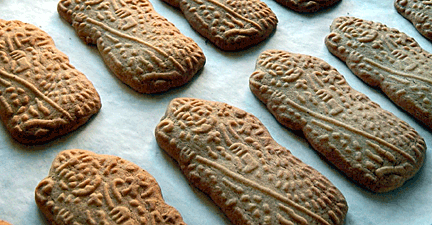 In
16th-century France, gingerbread became known as pain d'epice. In
1571, gingerbread bakers formed their own guild to distinguish
themselves from other pastry cooks and bakers. In
16th-century France, gingerbread became known as pain d'epice. In
1571, gingerbread bakers formed their own guild to distinguish
themselves from other pastry cooks and bakers.
Meanwhile in England, gingerbread had become such an everyday sweet
that both Shakespeare and Ben Johnson referred to it their in
writings. It became a common sight to see vendors hawking gilded
gingerbread images of saints and animals in city streets and at
country fairs. And Queen Elizabeth I favored important visitors with
charming gingerbread likenesses of themselves. Around that time,
bakers altered the recipe slightly, replacing the traditional
sweetener, honey, with the rich, dense flavor of molasses from
colonies in the New World.
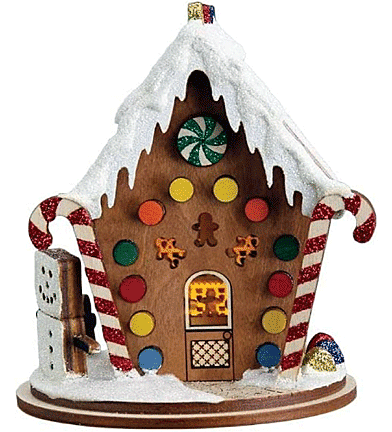 Three
hundred years later, German and French bakers added flour and eggs
to paste and turned the resulting dough into works of art. By the
time Peter the Great was born in Russia, the art form had attained
such elaborate proportions that a gingerbread replica of the Kremlin
weighing almost 200 pounds was among the gifts given to welcome the
new czar. Three
hundred years later, German and French bakers added flour and eggs
to paste and turned the resulting dough into works of art. By the
time Peter the Great was born in Russia, the art form had attained
such elaborate proportions that a gingerbread replica of the Kremlin
weighing almost 200 pounds was among the gifts given to welcome the
new czar.
In 1784 Mary Hall Washington served gingerbread cake to her son,
George, and the Marquis de Lafayette (along with a mint julep to
wash it down). Both men had probably eaten a version of the spicy
sweet during the Revolutionary War, when it was a staple for the
soldiers—both Continental and Redcoat.
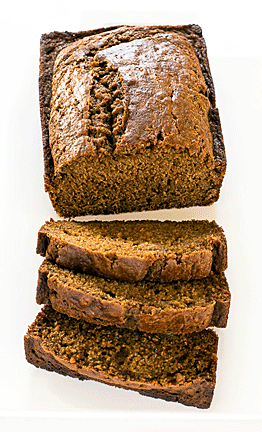 In
the new republic, gingerbread's popularity with the troops continued
on Muster Day (generally the first Tuesday in June), when men of
military age gathered on town greens to drill and fire their
weapons. Wives, children, and family friends frequently came along
to watch, while eating thin slabs of crisp gingerbread. In
the new republic, gingerbread's popularity with the troops continued
on Muster Day (generally the first Tuesday in June), when men of
military age gathered on town greens to drill and fire their
weapons. Wives, children, and family friends frequently came along
to watch, while eating thin slabs of crisp gingerbread.
Stalls in Colonial markets sold gingerbread cakes while itinerant
peddlers called pastry boys wandered the crowded streets with trays
of hot spice gingerbread heads, inviting passers-by to sample their
wares.
During the early 19th century, gingerbread took on a new shape and
texture, becoming a softer confection more like cake. As trade with
the East flourished, women became more adventurous with spices,
using them frequently when baking. Gingerroot usually grated or
chopped fine—quickly became such a popular ingredient that clipper
ships delivered it regularly to Salem, Massachusetts, early
America's largest port of entry for spices. Merchants competed for a
share of the knobby, gnarled ginger-mitt, a few shavings of which
could enliven the flavor of a dish. And sailors often carried the
cake-like gingerbread on return visits to the Orient as an aid to
digestion.
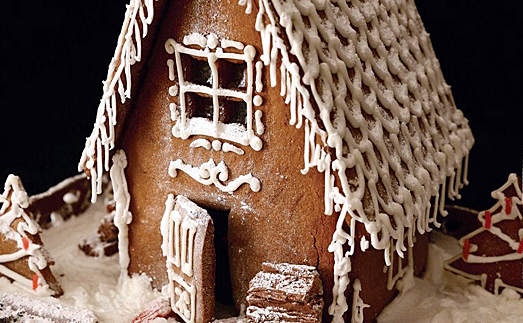
 The
first folk recognition came in 1812 with the publication of Grimm’s
Nursery and Household Tales, a collection of German stories. One of
them, "Hansel and Gretel," did more for the legend of gingerbread than
anything else. In the story, two children get lost in the woods and find
a house made of bread and cake, with windows of sugar. German composer
Engelbert Humperdinck wrote an opera based on the story, in which the
house in the set was made of gingerbread. This established the small
cottage as the most popular gingerbread motif. German bakeries began
offering elaborate gingerbread houses with icing snow on the roofs,
along with edible gingerbread Christmas cards and finely detailed molded
cookies. The
first folk recognition came in 1812 with the publication of Grimm’s
Nursery and Household Tales, a collection of German stories. One of
them, "Hansel and Gretel," did more for the legend of gingerbread than
anything else. In the story, two children get lost in the woods and find
a house made of bread and cake, with windows of sugar. German composer
Engelbert Humperdinck wrote an opera based on the story, in which the
house in the set was made of gingerbread. This established the small
cottage as the most popular gingerbread motif. German bakeries began
offering elaborate gingerbread houses with icing snow on the roofs,
along with edible gingerbread Christmas cards and finely detailed molded
cookies.
Tinsmiths fashioned
cookie cutters into all imaginable forms, and every woman wanted one
shape that was different from anybody else's. Most of the gingerbread
cookies that hung on 19th-century Christmas trees were at least half an
inch thick and cut into animal shapes or gingerbread men. By the 1880's,
flat gingerbread cakes also appeared, often decorated with colorful
pictures pasted on with egg whites.
<
More Special Features
Next Article > |
